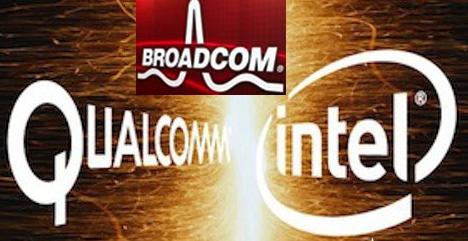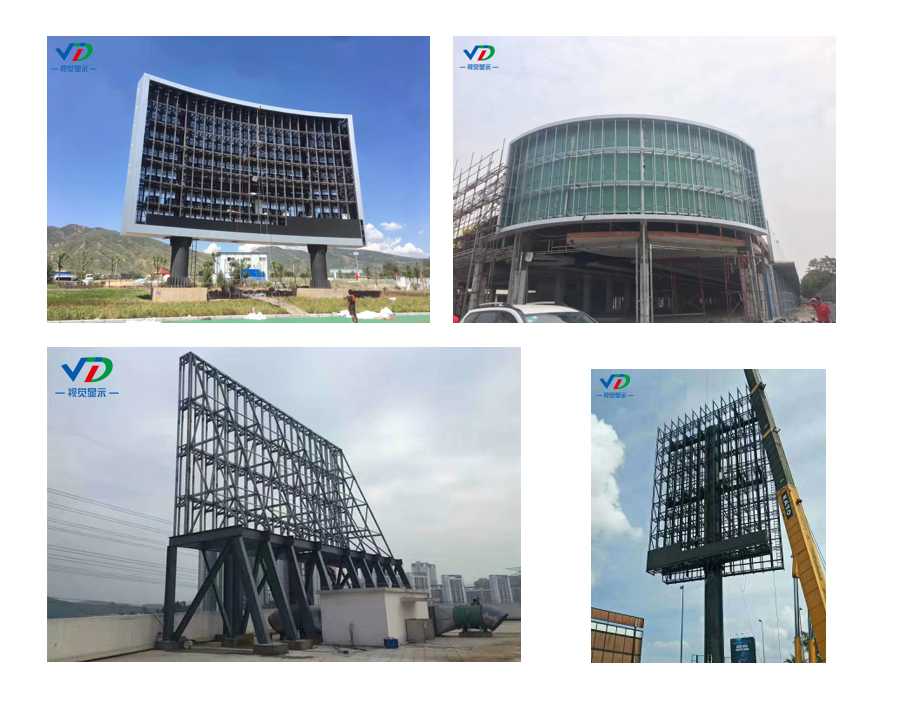TD-LTE chip war heats up
 Qualcomm, Broadcom, and Intel’s domestic 4G market for cakes are accelerating their start-up, and licenses may be issued before the end of the year. On the eve of the opening of the 4G curtain, mobile phone chip makers are eager to try, this huge market cake makes people mouth-watering. Especially foreign chip makers want to grab more shares with their own technological advantages. At the time when domestic manufacturers were still feeling headaches with the five-mode and 10-band frequency, Qualcomm launched a seven-mode full-coverage chip product, which is not good news for domestic chip makers.
Qualcomm, Broadcom, and Intel’s domestic 4G market for cakes are accelerating their start-up, and licenses may be issued before the end of the year. On the eve of the opening of the 4G curtain, mobile phone chip makers are eager to try, this huge market cake makes people mouth-watering. Especially foreign chip makers want to grab more shares with their own technological advantages. At the time when domestic manufacturers were still feeling headaches with the five-mode and 10-band frequency, Qualcomm launched a seven-mode full-coverage chip product, which is not good news for domestic chip makers. The industry is concerned that Qualcomm's exclusive Qualcomm RF360 front-end solution launched at the QRD (Qualcomm Reference Design) Summit will enable a single terminal to support all LTE formats and frequency bands for the first time, supporting seven network standards (FDD, TD-LTE, WCDMA, EV-DO, CDMA 1x, TD-SCDMA and GSM/EDGE). Luo Jiefu, senior vice president of product management of Qualcomm Technology, stated that according to Qualcomm's current design scheme, it is possible to do three or three or even four cards in handsets. Partners can freely design slot allocations in products.
This means that in the future 4G, 3G coexistence market, the switching of various modes will become easier. The only worry is the price of these products. At the QRD summit, a person in charge of a mobile phone manufacturer told the “IT Times†reporters with worries that most of the patents were in the hands of Qualcomm, which led to expensive prices for chips supporting multiple models.
Broadcom is also a frequent action. Michael Sivero, senior director of Broadcom’s product marketing, told the “IT Times†reporter that Broadcom has launched the LTE chip model BCM21892, which is 35% smaller than other solutions in the industry and supports TD-LTE, FDD. - LTE, HSPA+, TD-SCDMA, EDGE/GSM five modes.
Foreign chip makers frequently perform their actions and domestic manufacturers are relatively calm. According to this development trend, foreign chip manufacturers will occupy the dominant position in the domestic TD-LTE terminal chip market. This is a matter of concern to the industry.
Although Intel had a 22-nanometer counterattack, it had only 2% of the mobile chip market, but in terms of technology, Intel was not at all high-profile. Intel said that the 22-nanometer chipset has been used on the tablet and ultrabooks, and that the 22-nanometer mobile phone chipset will also be available in the second half of this year. Compared with Qualcomm's current 28-nanometer process, it can demonstrate its process advantages.
At the same time, chip performance has once again become the focus of competition among manufacturers. Qualcomm Snapdragon's latest 800 processor supports playback and recording of 4K ultra high definition video, DTS-HD and Dolby Digital Plus audio, support for up to 55 million pixel cameras and up to 2560×2048 screen resolution, and 1080p HD Miracast wireless display.
In addition to combining Broadcom's chips with 5G WiFi, globally-authenticated NFC technology, and advanced indoor positioning technology, Broadcom’s VideoCore multimedia supports “dual HD†functionality, providing simultaneous HD output for smartphones and large Miracast-enabled screens such as TVs. and many more.
Reducing chip energy consumption to become the main target energy consumption has become the biggest “heart disease†for smart phone users. They hope that the balance between performance and power consumption can be achieved. 4G, multimode, and ever-improving chip performance are a huge test for energy consumption.
In this regard, Michael Sievero from Broadcom introduced that Broadcom chipset adopts a new "wave peak energy consumption control technology" that will automatically adjust energy consumption according to the size of mobile phone signals. Qualcomm promotes fast charging technology. Rogerf said that the power consumption of Xiaolong 200 and future processor platforms will be 30% lower than that of competitors, and the use of the latest fast charging technology while charging can also shorten the charging time. Doubled.
Intel is also working on the balance between power consumption and performance. According to an Intel executive, Intel's mobile chips have a higher computational rate than other competitors in the same power consumption. At the same time, Intel's "Radio Frequency Technology" has been applied to mobile phones. The CPU will quickly increase the frequency according to the current workload. After the mission is completed, it will quickly return to the low frequency and save energy.
Chen Rongkun, vice president of product architecture division of Intel Corporation and general manager of China Mobile Division, told the IT Times reporter that there is a common misconception that there are some inherent energy efficiency issues in the X86 instruction set. In fact, the impact of the instruction set on power consumption is negligible, and the microprocessor architecture is the key to determining the “per-watt performance ratio†indicator. The specific implementations of ARM and X86 are just design points that are optimized for different levels of performance. "The trend in the future is that applications will have higher and higher demands on the performance of mobile phones. ARM will also have its own problems. If you improve performance, ARM will also encounter great difficulties in power consumption. Therefore, Intel and ARM are working on In two directions, the challenge for Intel is to reduce power consumption while ensuring high performance; ARM's problem is how to improve product performance under the same power consumption conditions, said Chen Rongkun.
With the popularity of LED outdoor screen, it is more and more used for lighting and store layout, becoming a beautiful scenery line in modern metropolis.
SMD Outdoor Fixed LED Screen features:
1. Strong visual impact, dynamic picture and sound, all-round let the audience feel, effectively transmit advertising information to guide consumption. In the face of overwhelming advertising, memory limitations and unlimited information dissemination, the use of Led Display has become a scarce resource.
2. According to the shape of the wall, it can be straight or curved. Shape diversity creates more personalization and strong visual impact;
3. The credibility of the audience is high. Compared with the rejection and distrust of the advertising flyers artificially distributed on the street, the application of LED display makes the audience more active and passive. It can avoid the help barriers caused by the conscious active avoidance of the advertising audience, and greatly improve the credibility and promotion of the Led Screen advertising content.
4. Accurate advertising, the original extensive advertising effect is not good, resulting in waste, so it is more product content to meet the needs of the masses, hot news, hot TV and movies can be used for reference, to control the market heat and laws freely.

Product structure: Outdoor Led Display mainly consists of screen body, control system, heat dissipation system and structure. The control mode includes remote control and field control, timing switch, etc.

SMD Outdoor Fixed LED Screen
Waterproof Led Wall Screen,Outdoor Fixed Install Led Screen,Smd Outdoor Fixed Advertising Led Display,Outdoor High Definition Smd Led Display
Shenzhen Vision Display Technology Co,.LTD , https://www.ledvdi.com
